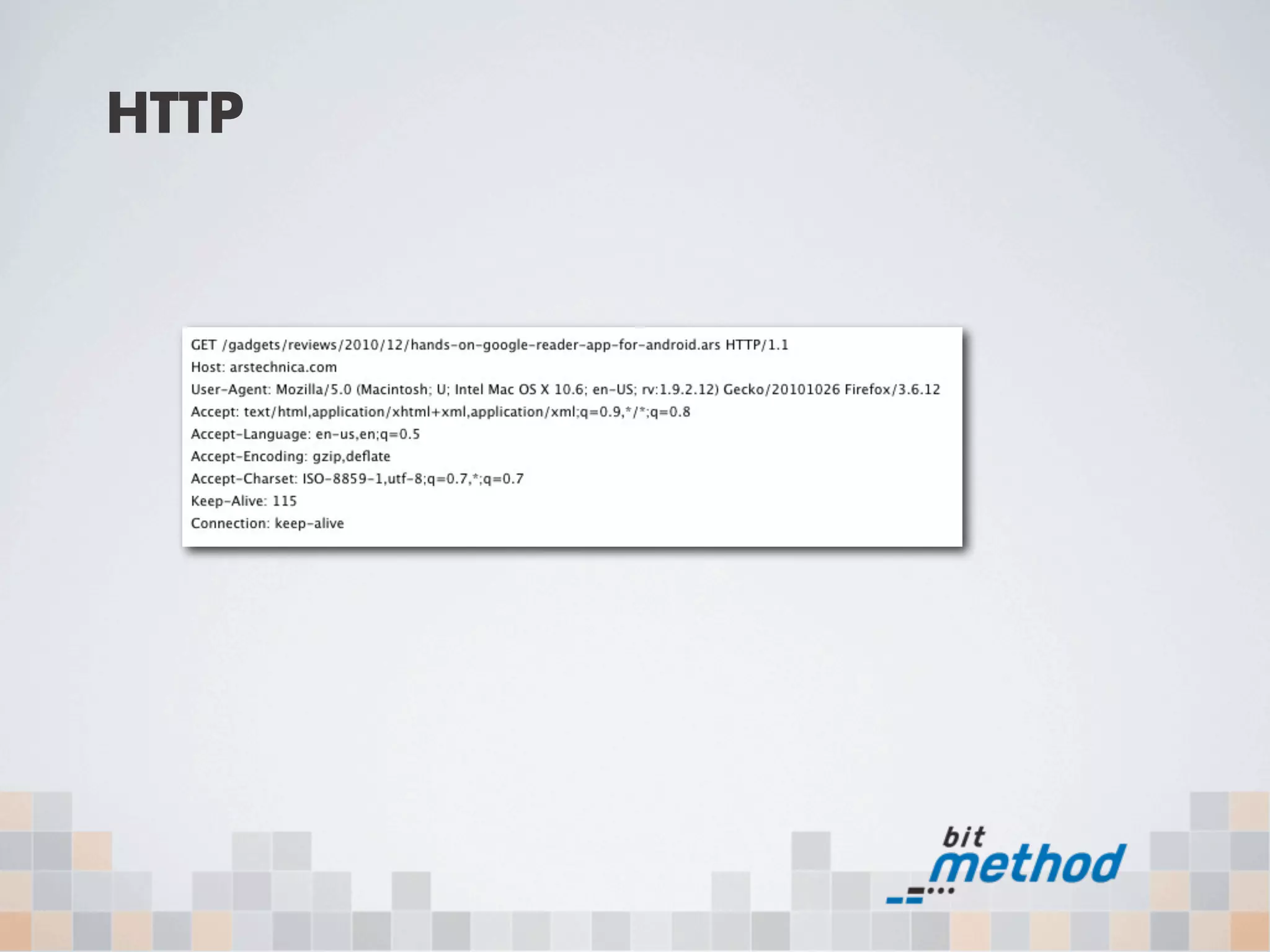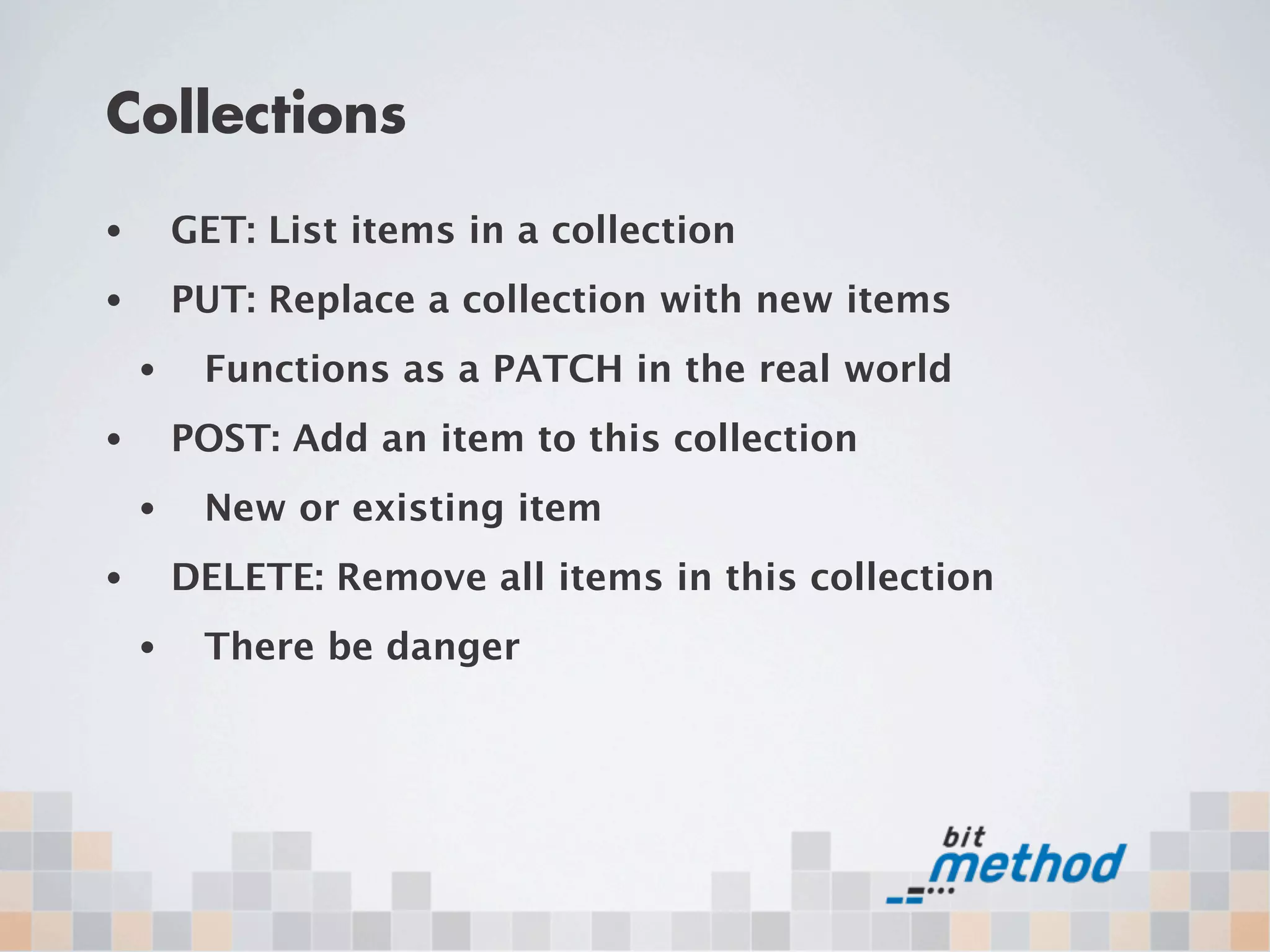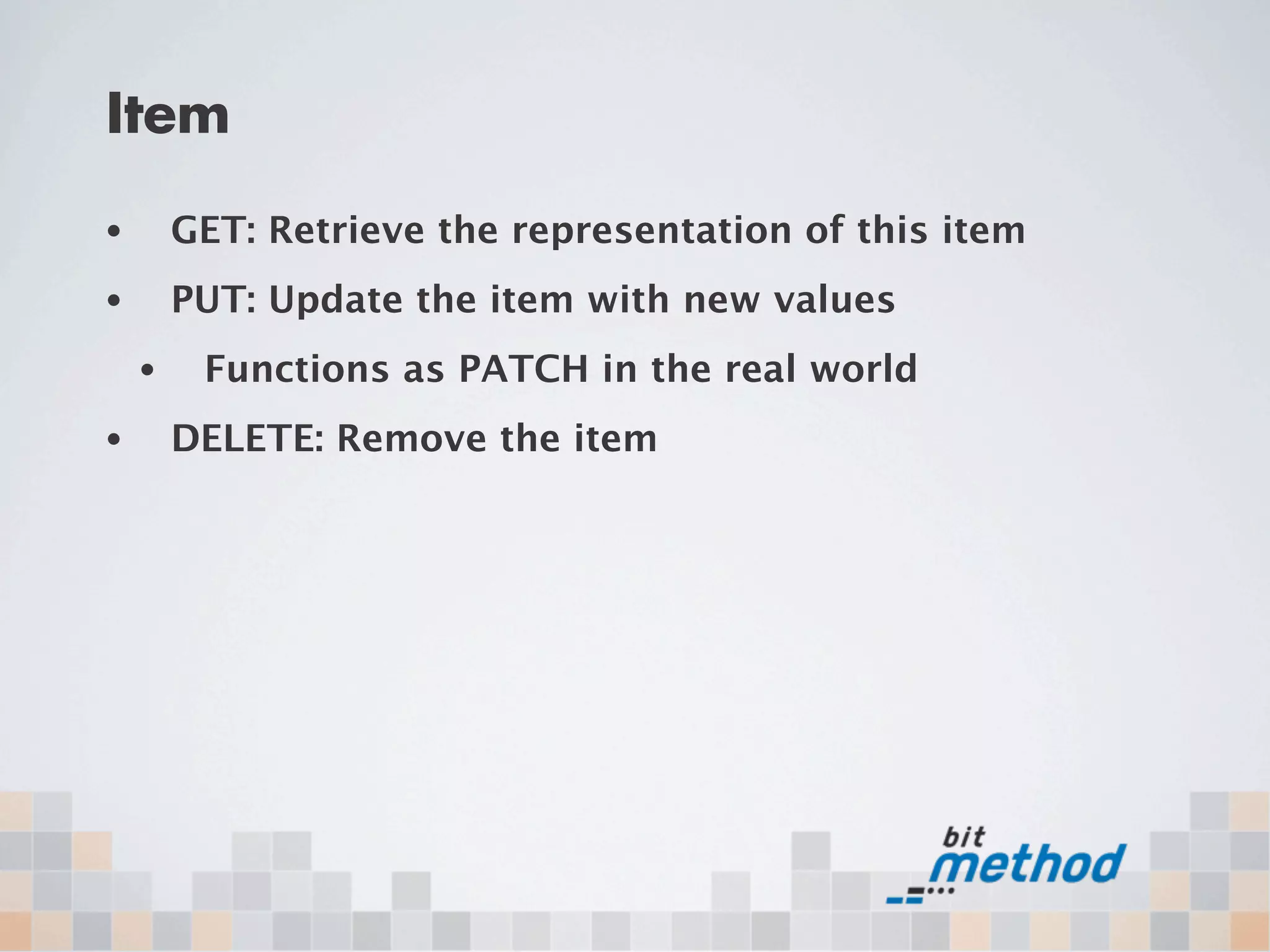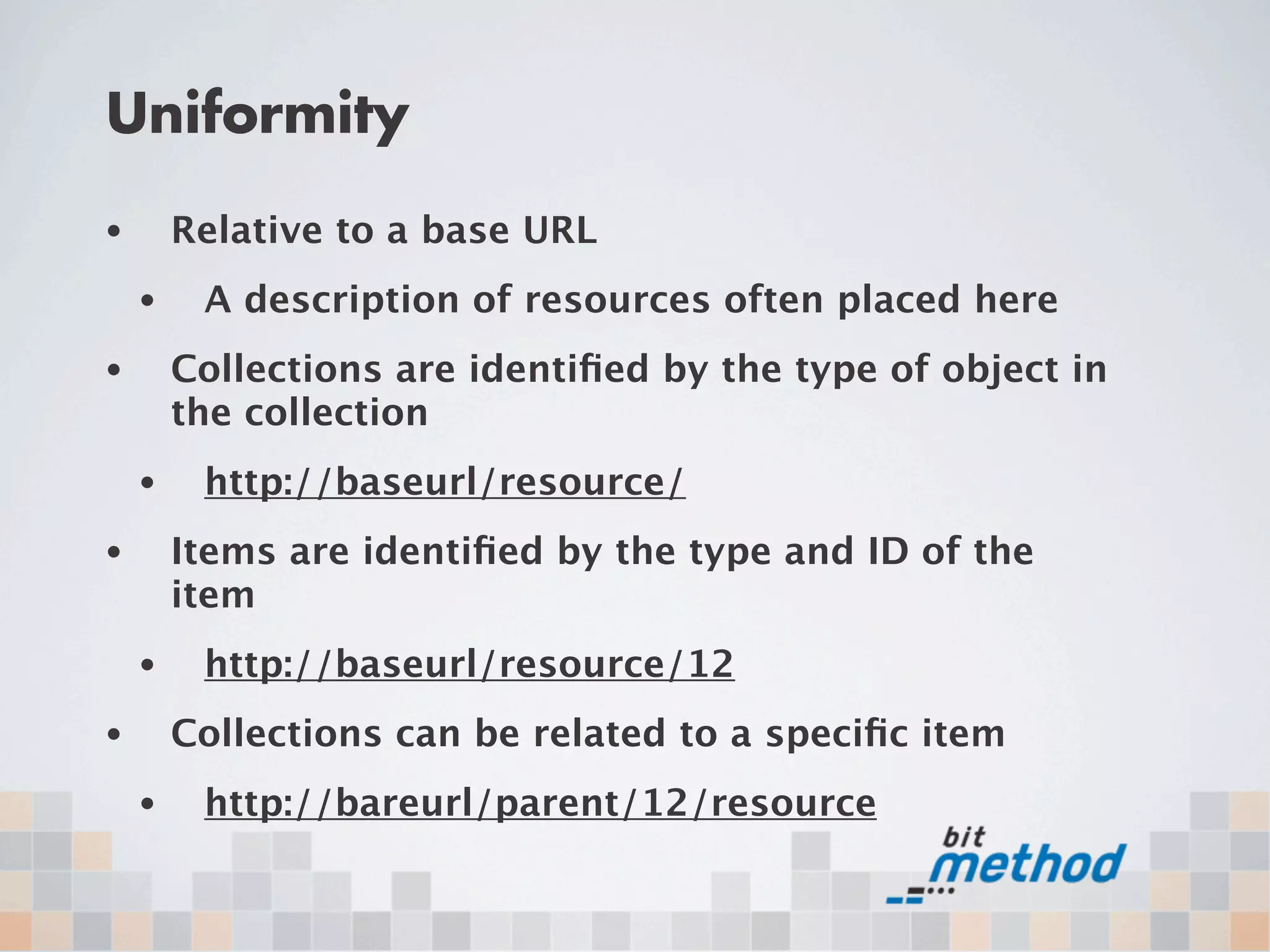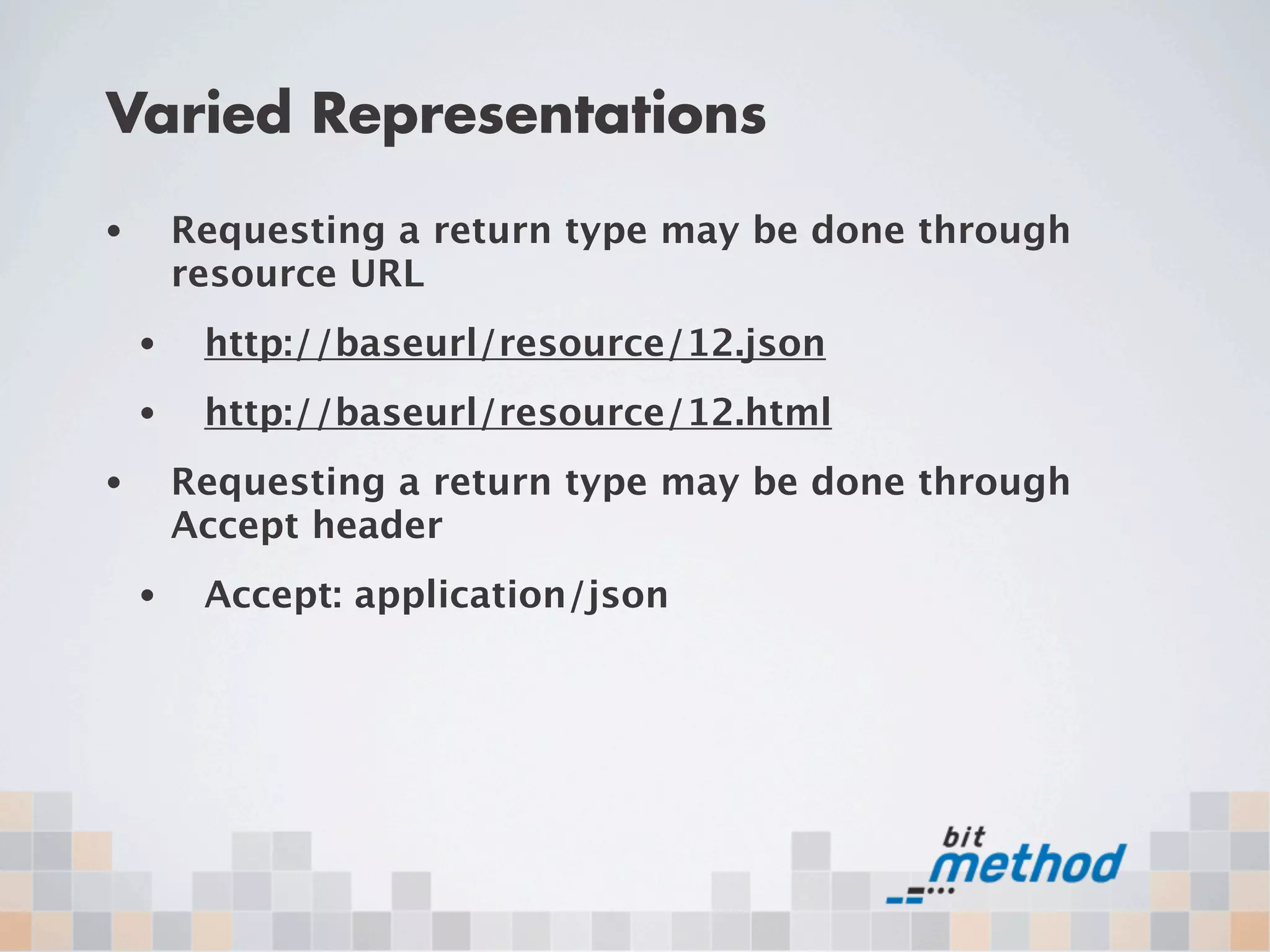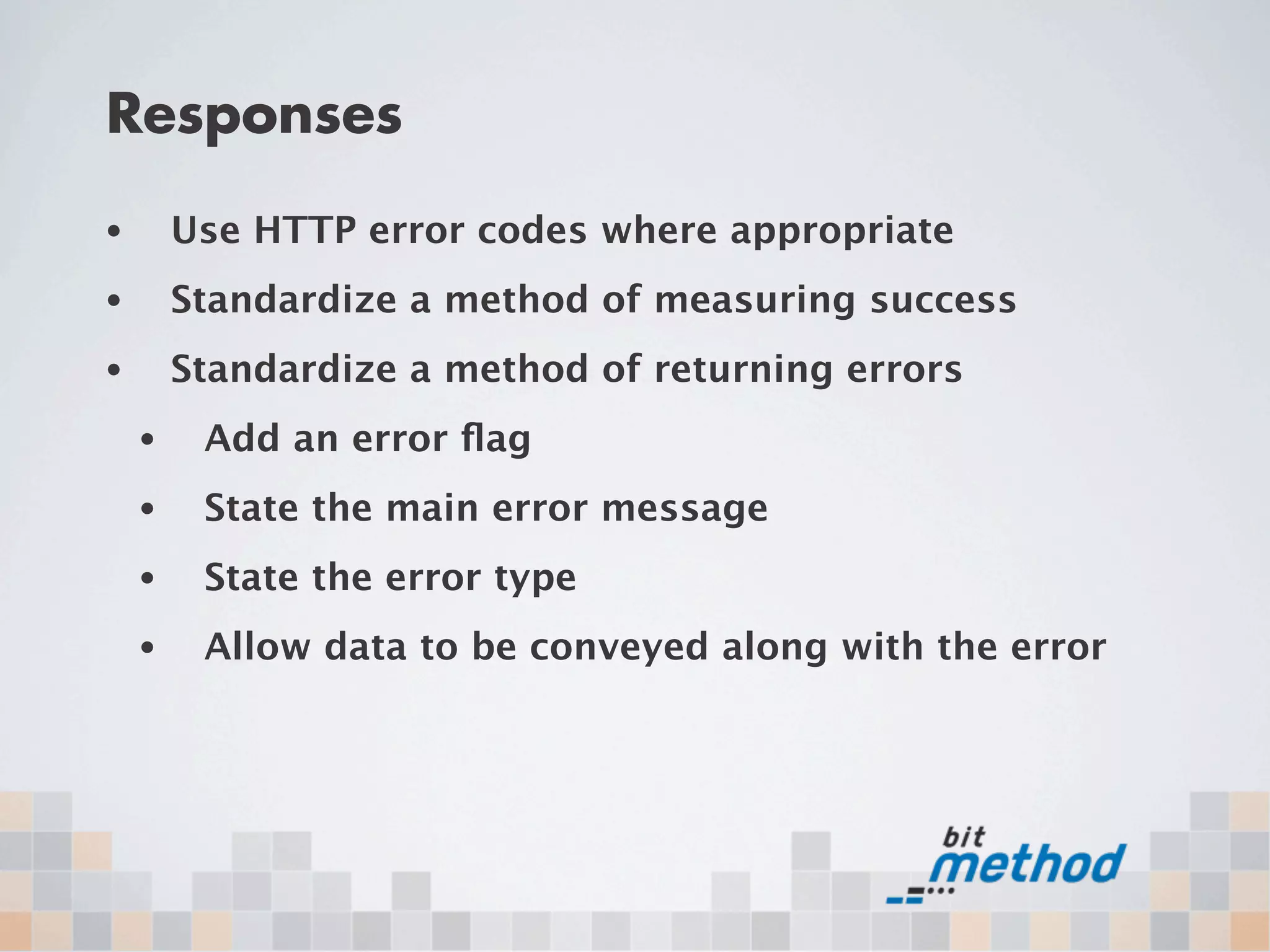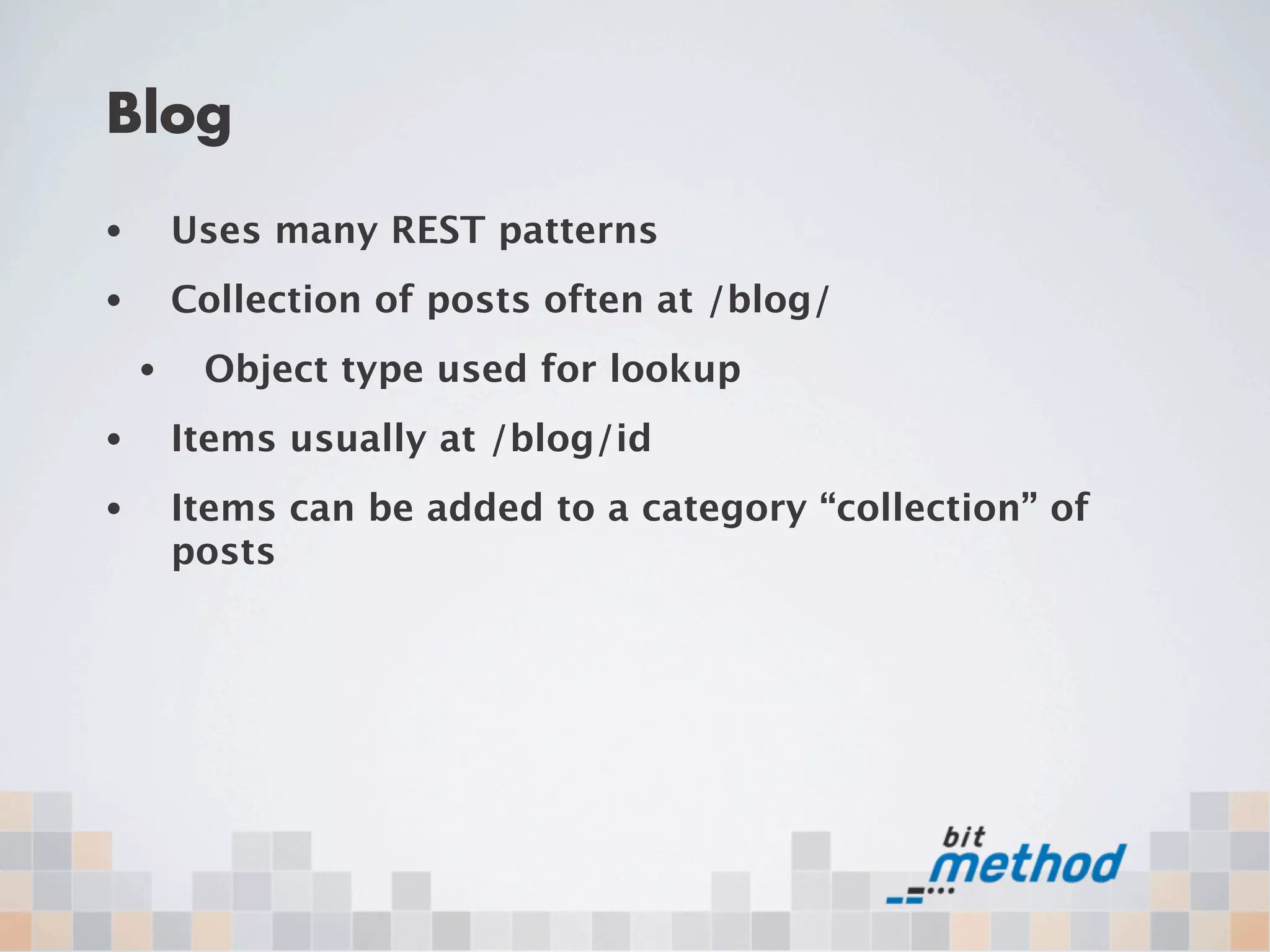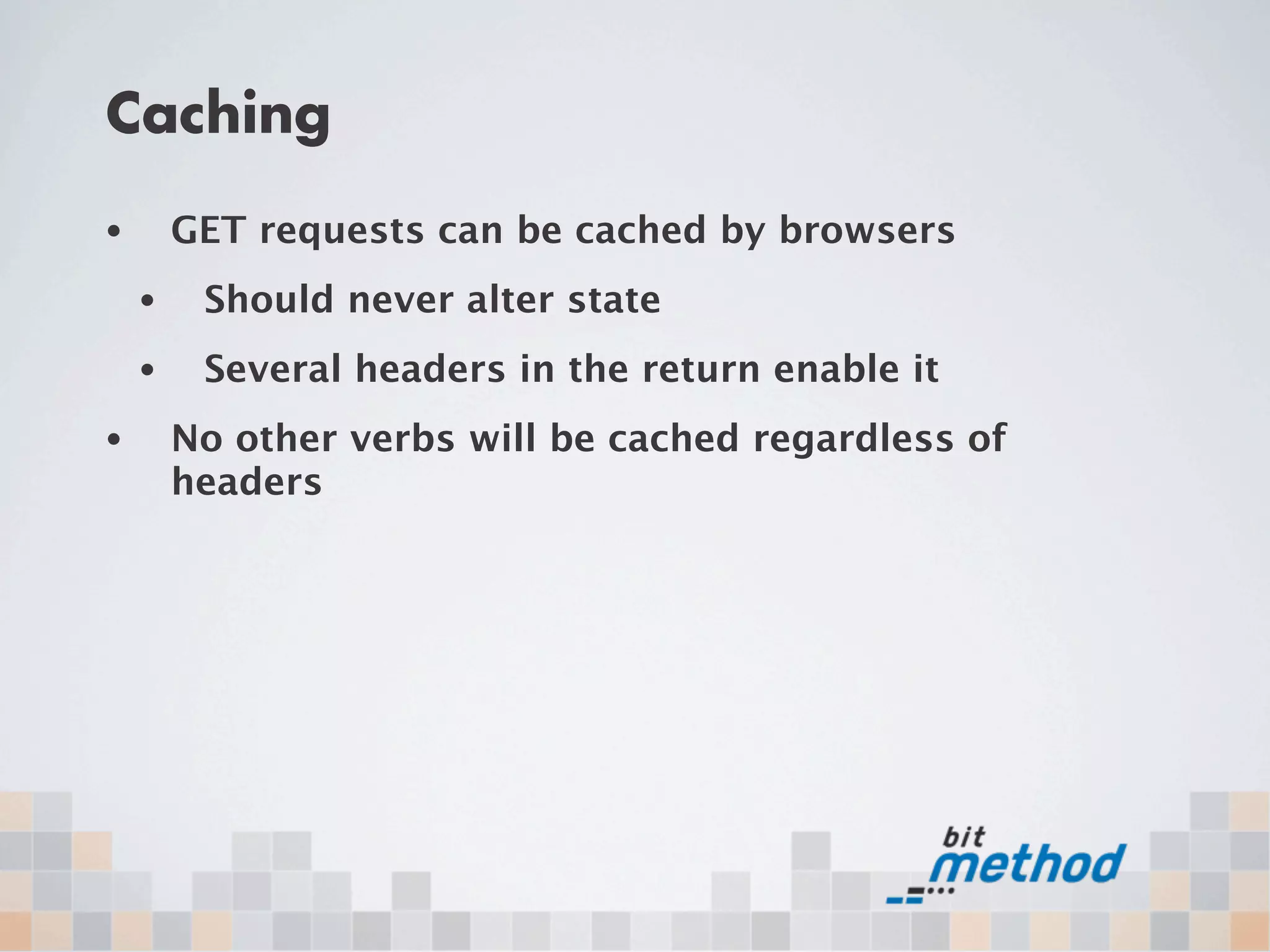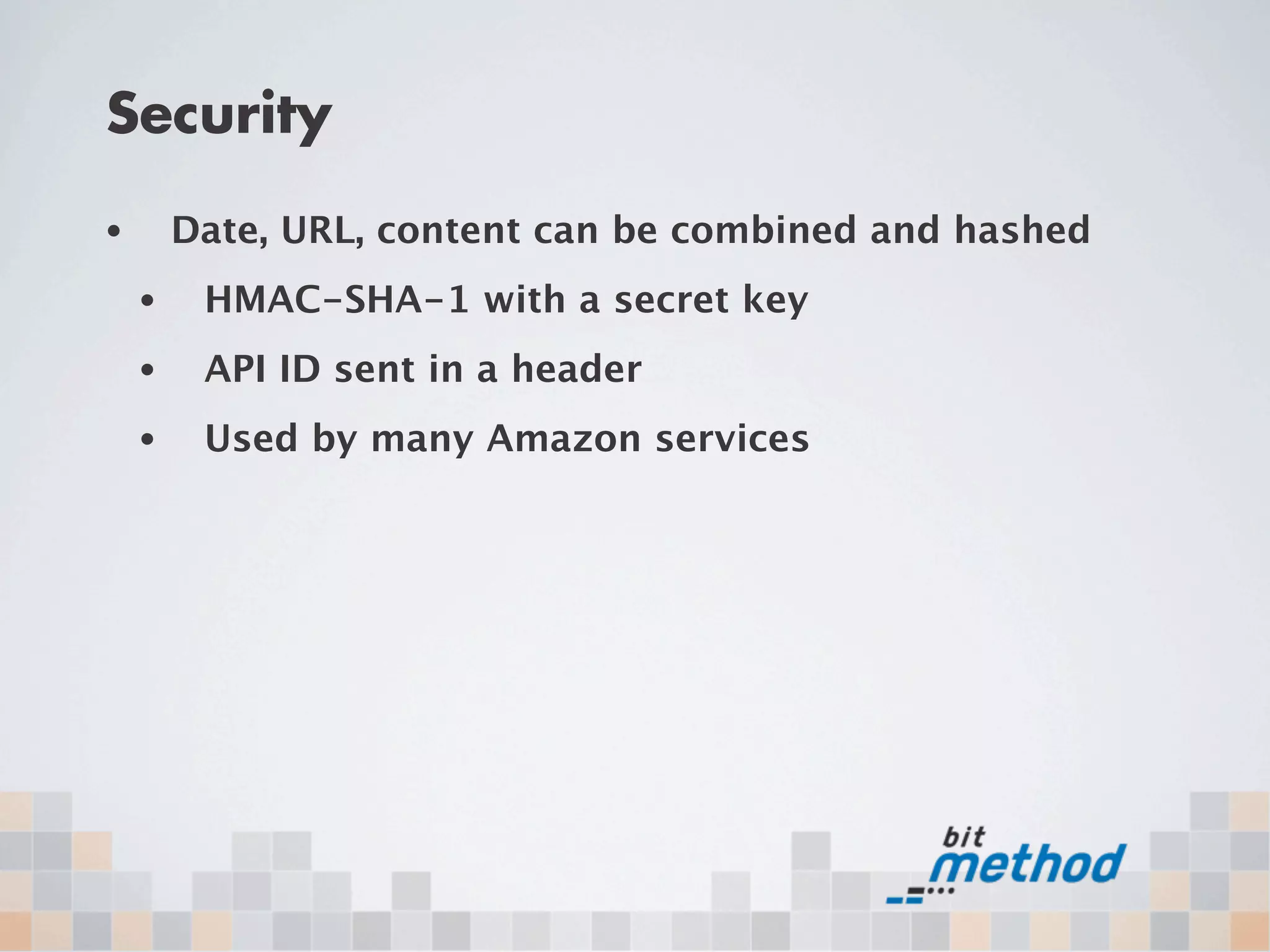This document discusses Representational State Transfer (REST) architectural styles and principles for designing web services. It describes how REST uses common HTTP verbs like GET, POST, PUT, and DELETE to transmit data in requests and standardized methods for returning successful responses and error messages. Key REST concepts covered include using URLs to identify resources and collections, supporting multiple representation formats like JSON or XML, and enabling caching for GET requests to improve performance.


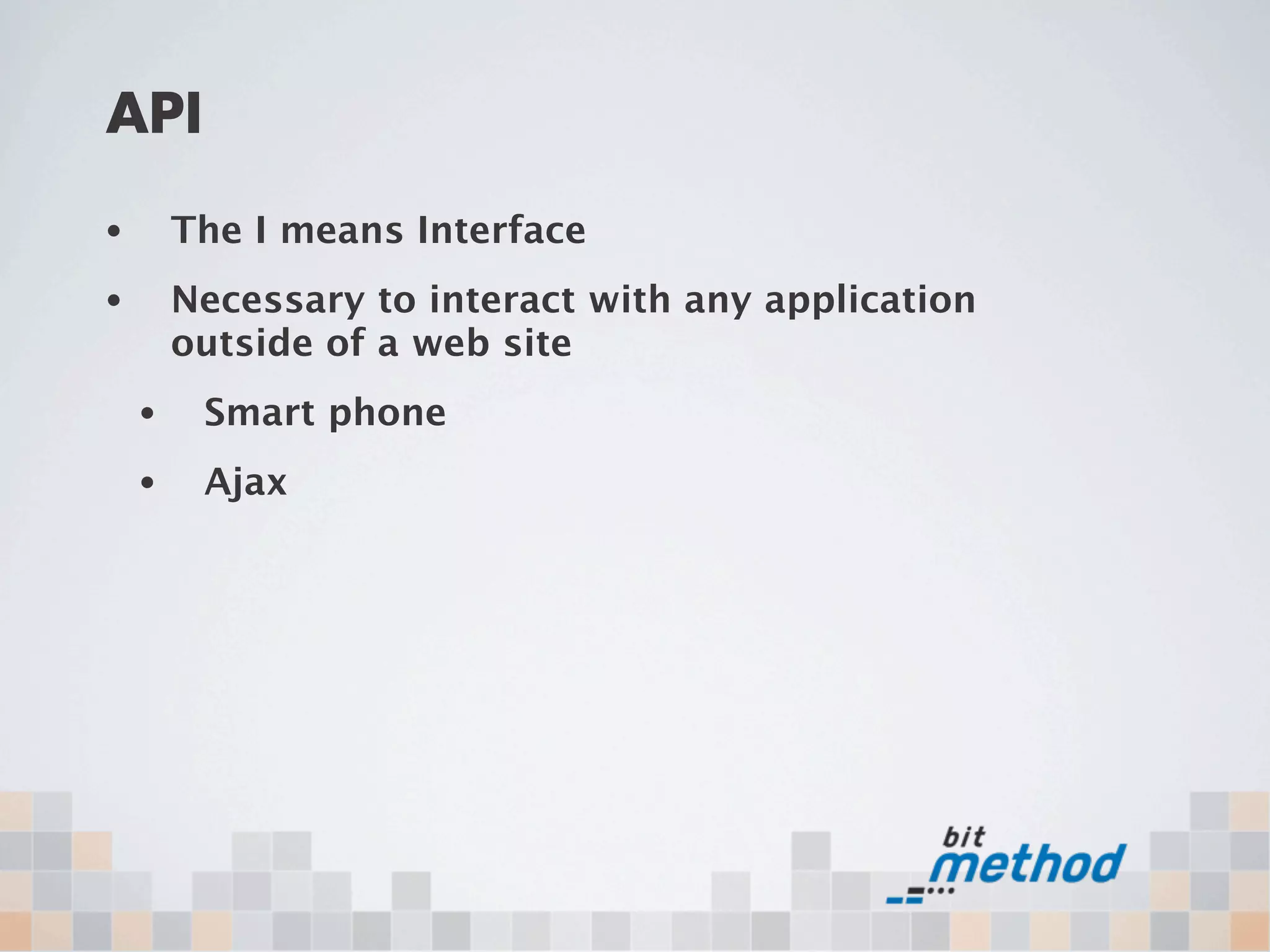
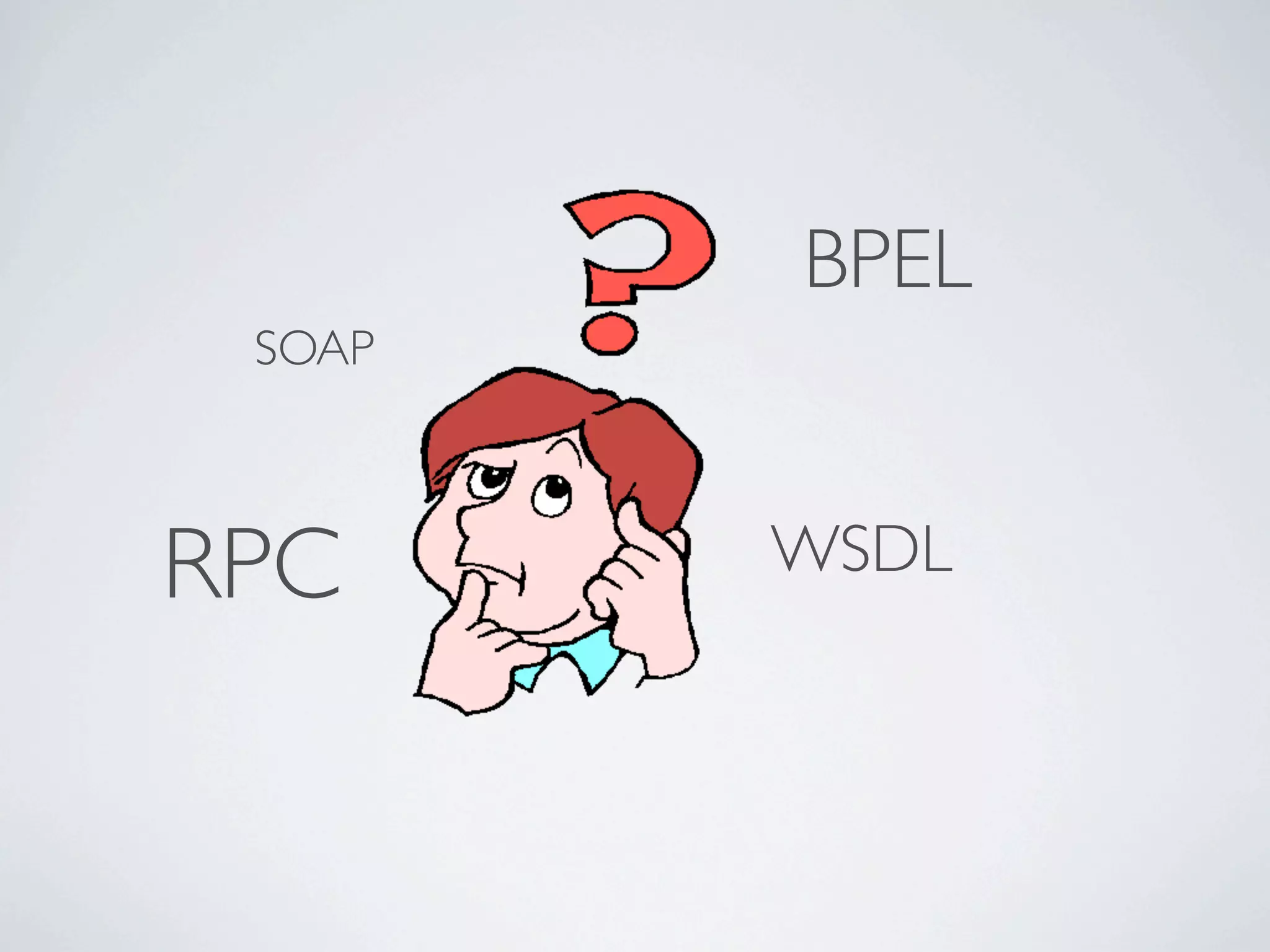
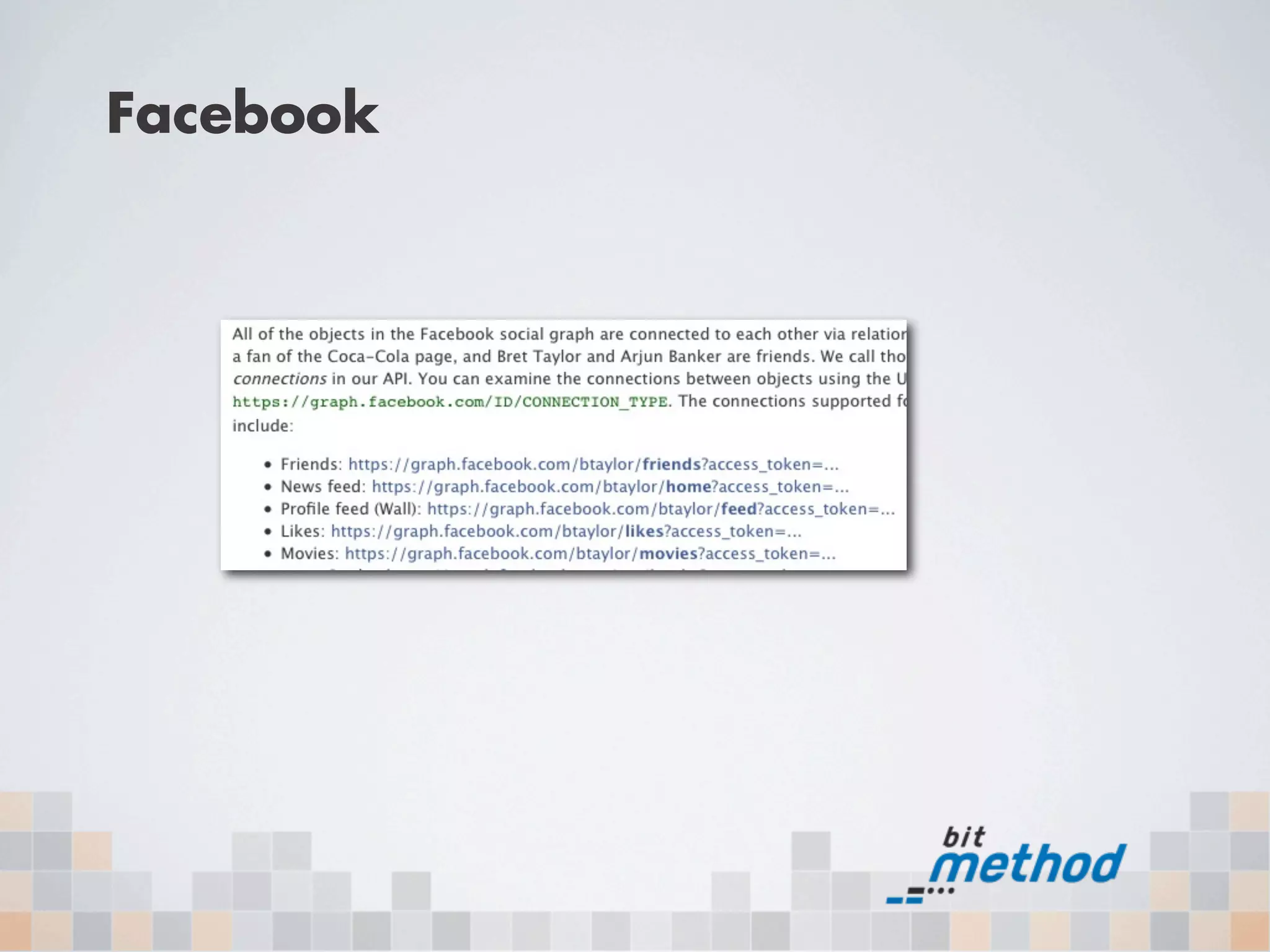
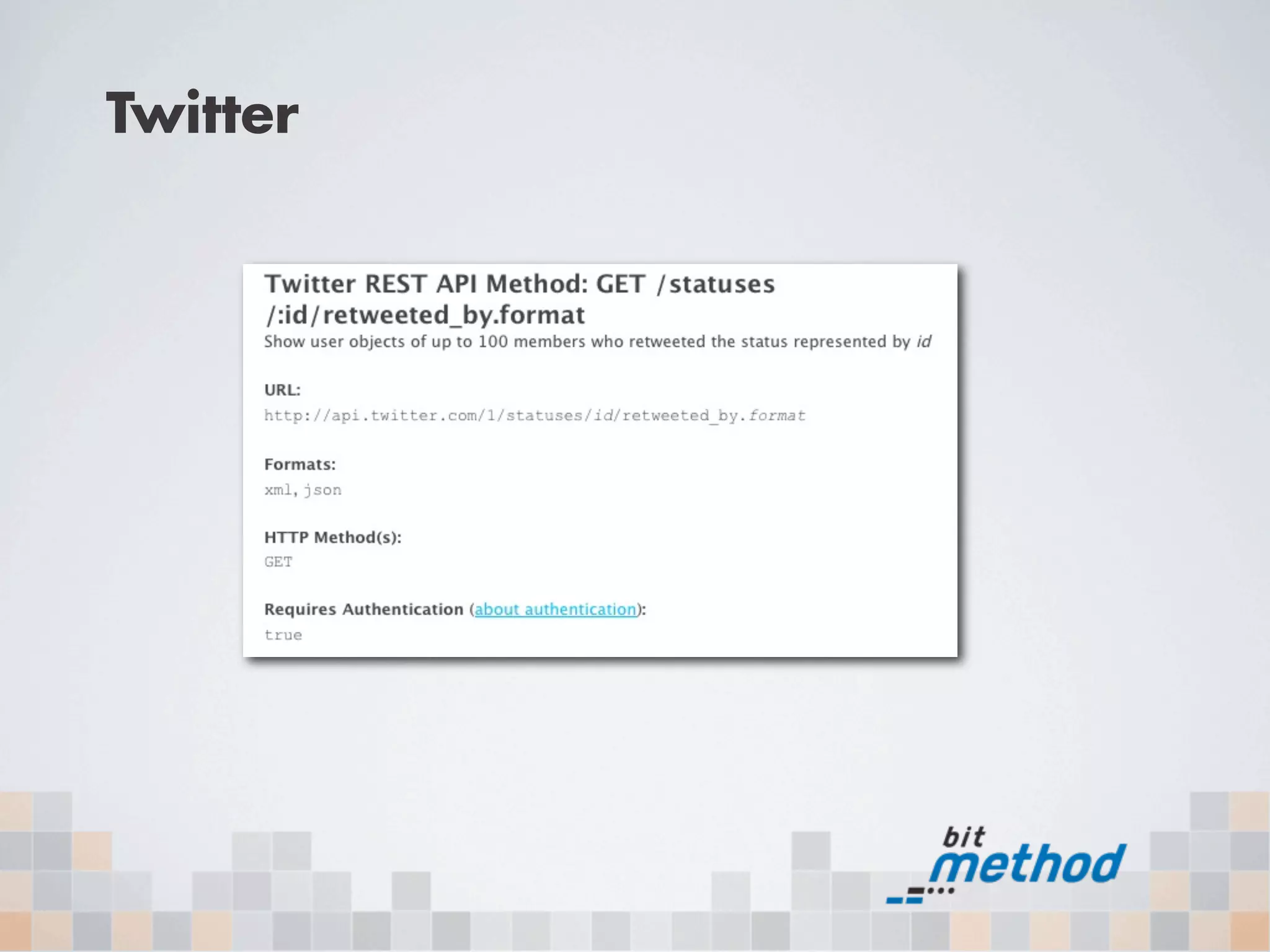
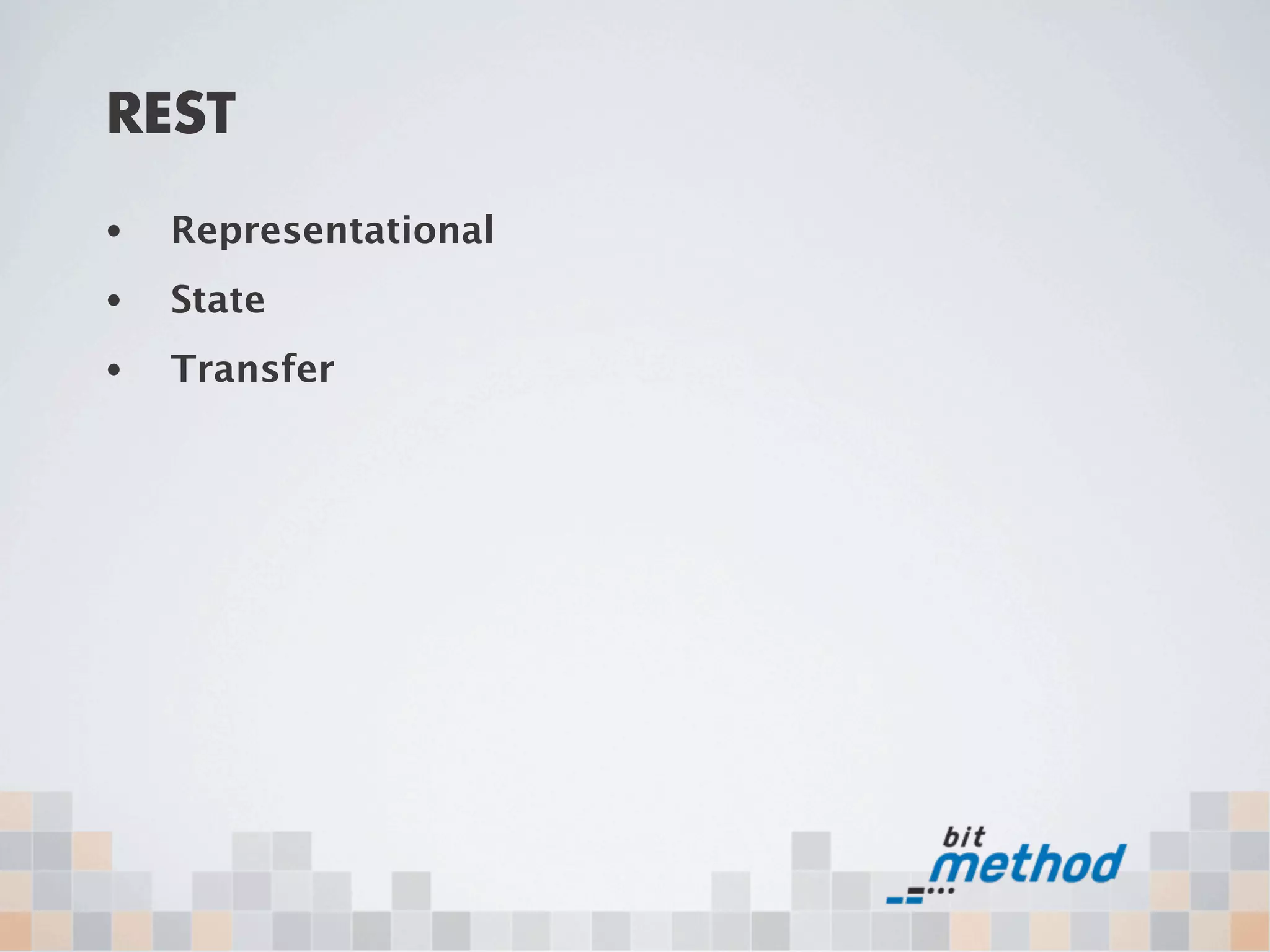
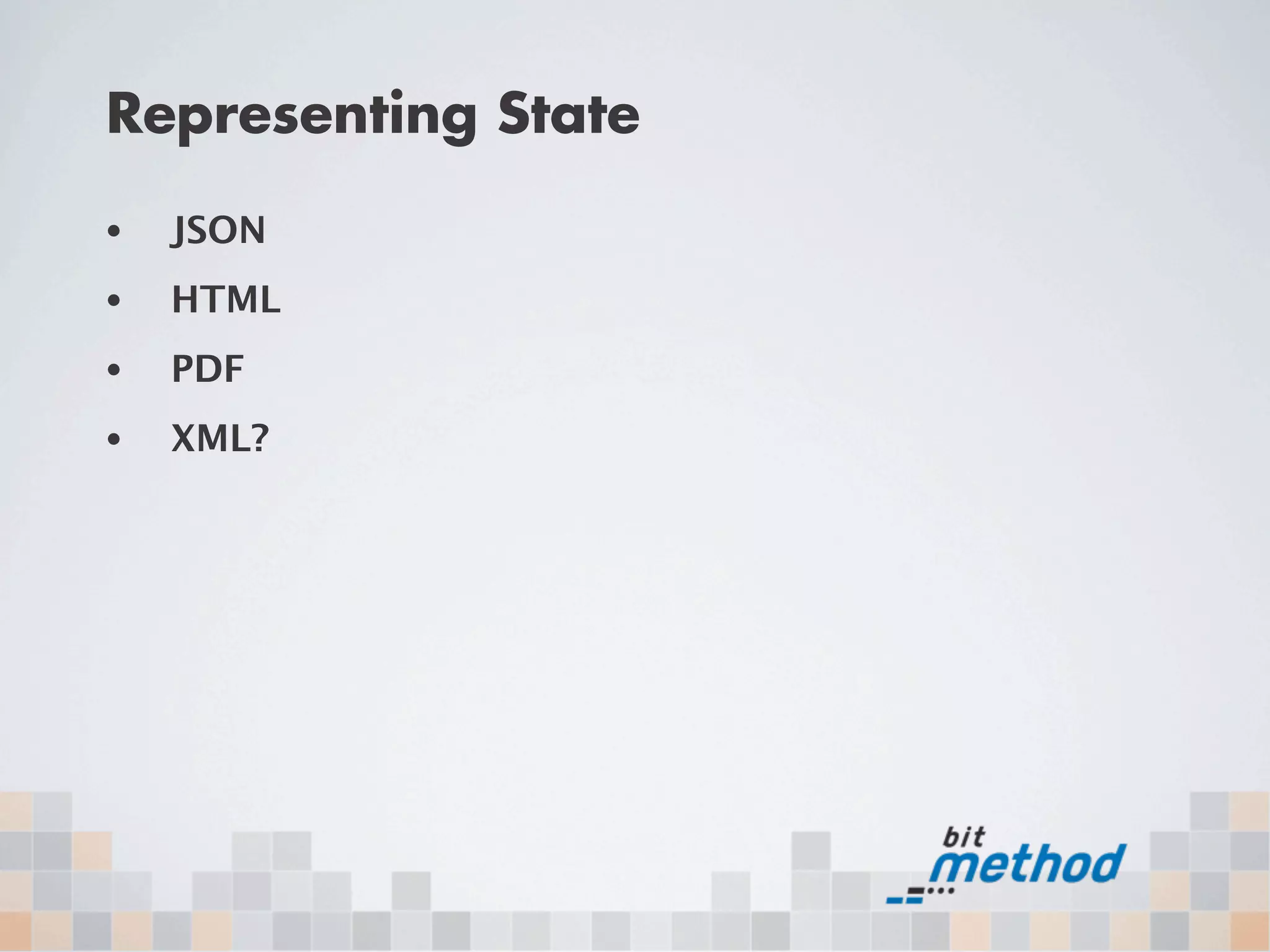
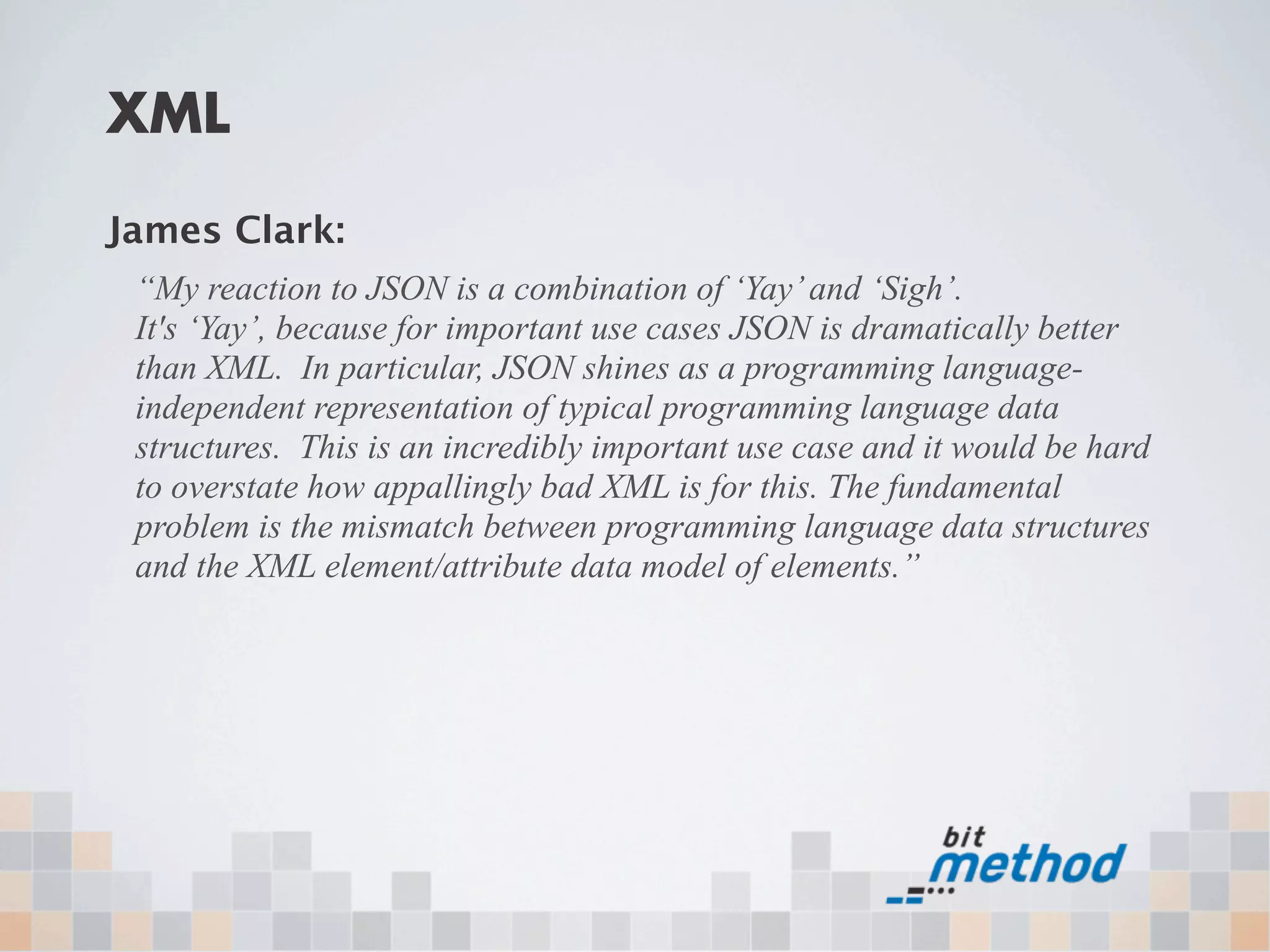
![Verbs
• GET: Retrieve data
• PUT: Replace data
• POST: Add data
• [PATCH]: Update data
• DELETE: Remove data](https://image.slidesharecdn.com/rest-101210170320-phpapp02/75/Rest-10-2048.jpg)
